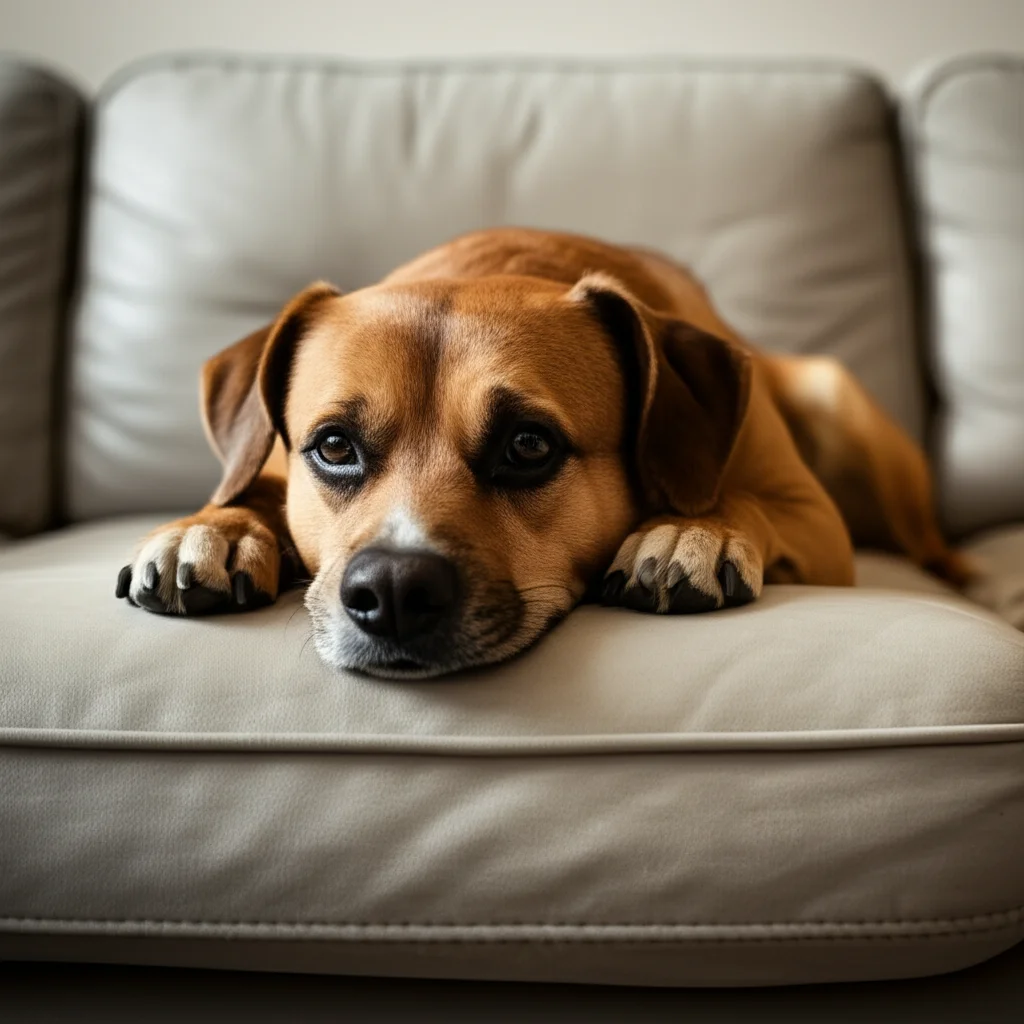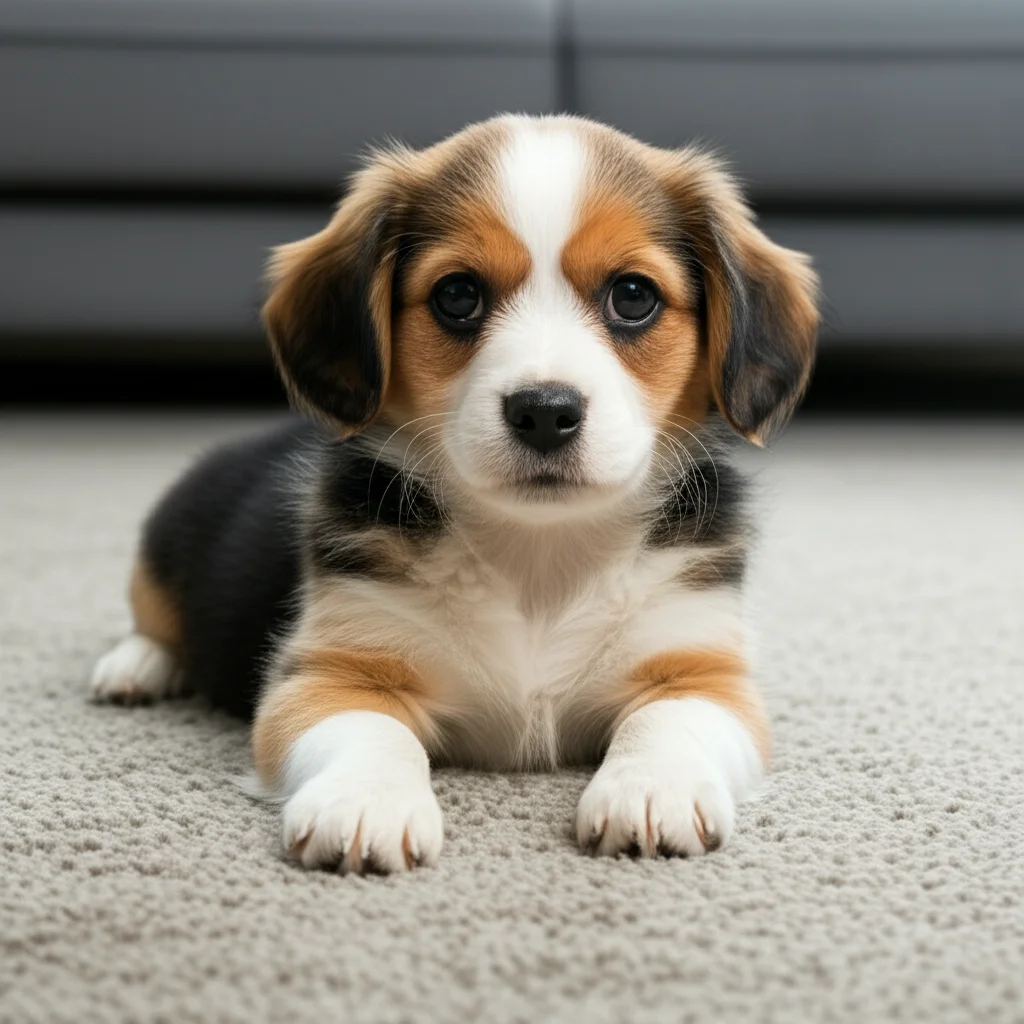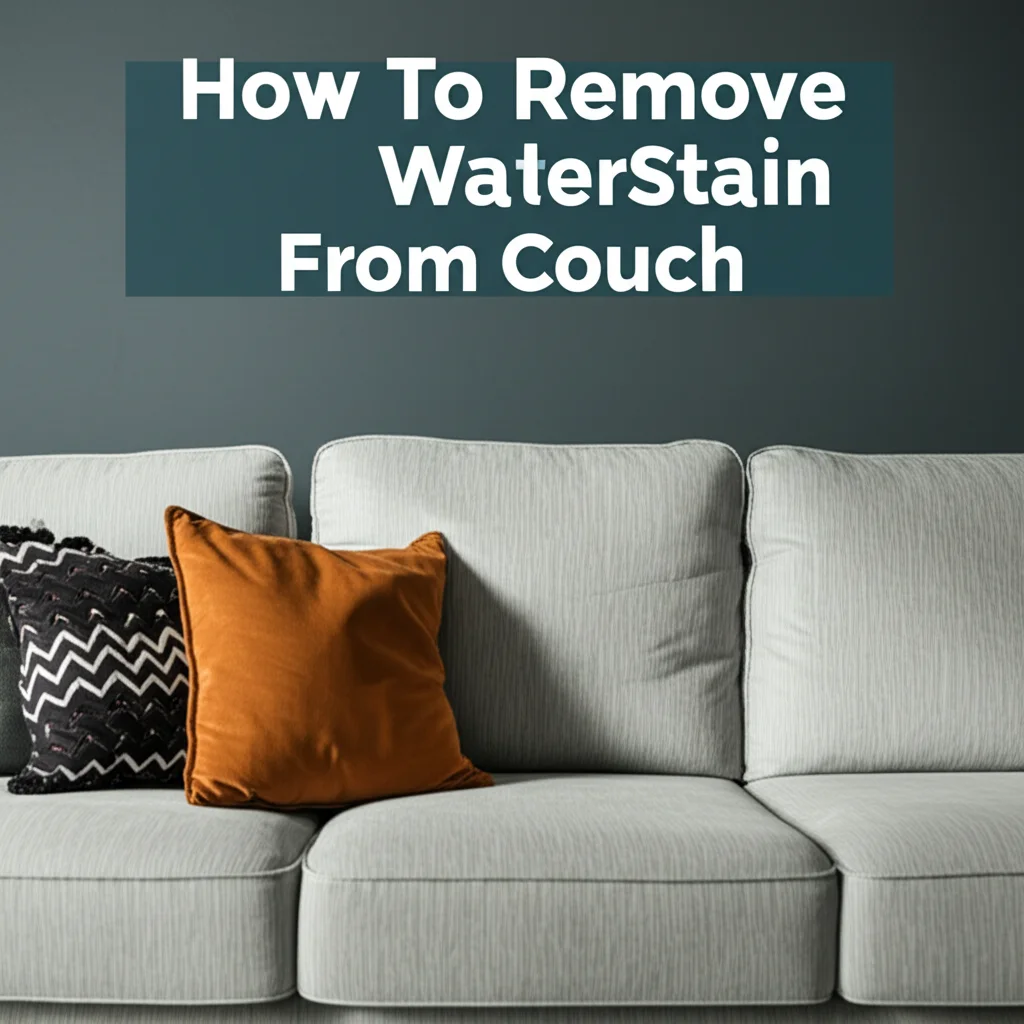· Kianna Connelly · Home Cleaning · 10 min read
How To Get Dog Urine Out Of Couch Foam

Rescue Your Couch Foam: How To Get Dog Urine Out
A dog urine accident on your couch is never pleasant. The smell can linger, and the stain can seem impossible to remove. I know this problem well as a pet owner. Getting dog urine out of couch foam requires quick action and the right cleaning method.
When pet accidents happen, the urine soaks deep into the foam, making it a challenge to clean completely. This article gives you a step-by-step guide to tackle dog urine stains and odors from your couch foam. We will cover immediate actions, cleaning solutions, deep cleaning, odor removal, and ways to prevent future incidents. You can restore your couch’s freshness and comfort.
Takeaway
- Act quickly to blot fresh urine, preventing deep absorption into foam.
- Remove couch covers and cushions for separate cleaning.
- Use enzymatic cleaners to break down urine proteins and eliminate odors.
- Ensure thorough rinsing and drying to prevent mold and mildew growth.
- Consider protective covers and retraining to prevent future accidents.
Clear Solution for Couch Foam Accidents
To get dog urine out of couch foam, act fast by blotting the wet spot. Then, saturate the area with an enzymatic cleaner, which breaks down urine’s odor-causing compounds. Blot again, rinse with water, and allow the foam to dry completely to prevent lingering smells and mildew.
Immediate Action: The First Steps to Tackle Fresh Stains
When your dog pees on the couch, speed is important. Fresh urine is easier to remove than dried urine. You want to stop the urine from soaking deep into the foam. I always grab paper towels or a clean cloth right away.
Press firmly on the wet area to absorb as much liquid as possible. Do not rub the stain, as this pushes the urine deeper into the foam and spreads it. Continue blotting until the area feels mostly dry. This first step removes a lot of the problem before it sets.
Next, you need to remove the couch cushions if they are detachable. Most couches have cushions with zippers. Take off the fabric cover and set it aside for washing. If your couch has foam padding directly under the upholstery, you will clean the foam in place. Separating these parts allows for better cleaning and drying. This helps prevent permanent stains and smells.
Essential Cleaning Solutions for Couch Foam
Choosing the right cleaning solution is important for dog urine in couch foam. Regular cleaners often mask the smell or do not break down the uric acid crystals. Enzymatic cleaners are the best choice. These cleaners contain enzymes that digest the proteins in pet urine, removing the stain and the odor at its source.
You can find enzymatic cleaners at pet stores or online. Always test the cleaner on a small, hidden area of your couch first. This checks for colorfastness and foam damage. Spray or pour the enzymatic cleaner generously onto the urine-affected foam. You want to saturate the foam completely where the urine soaked. The cleaner needs to reach all the urine.
Let the cleaner sit for the time recommended on the product label. This allows the enzymes to work. For severe odors, you might need to let it sit longer, sometimes up to several hours. Follow the directions closely for the best outcome. This step is crucial for breaking down the odor-causing elements.
Deep Cleaning Techniques for Embedded Urine
After the enzymatic cleaner has worked its magic, it is time for deep cleaning. This step removes the remaining cleaner and any broken-down urine residues. You need to rinse the foam without soaking it excessively. I use a clean cloth dampened with plain water.
Press the damp cloth into the foam, then blot it dry with a separate, dry cloth. Repeat this process several times. This action lifts the cleaner and urine particles out of the foam. You are essentially flushing the urine out. For a more thorough rinse, you can use a wet/dry vacuum or an upholstery cleaner. These machines extract the liquid directly from the foam.
If the couch cushions are removable, you can carefully rinse them in a utility sink or bathtub. Fill the sink with lukewarm water and gently squeeze the foam to release the cleaner. Avoid twisting or pulling the foam roughly. It can lose its shape. Rinse until the water runs clear, ensuring all cleaning solution is gone. Proper rinsing prevents residue buildup. You can learn more about how to clean couch cushions urine by visiting our guide.
Neutralizing Odors in Couch Foam Permanently
Even after cleaning, a faint urine odor can remain. This is often due to uric acid crystals that need further breakdown. Baking soda is excellent for odor neutralization. Once the foam is as dry as possible, sprinkle a generous amount of baking soda over the entire affected area. Make sure it covers the surface well.
Baking soda absorbs odors. Leave the baking soda on the foam for several hours, or even overnight. The longer it sits, the more odor it absorbs. For very stubborn odors, you can mix a small amount of white vinegar with water in a spray bottle. Spray this lightly over the baking soda. The reaction between baking soda and vinegar creates a fizzing action that helps lift and neutralize odors.
After the baking soda has done its work, vacuum it up thoroughly. A strong vacuum with a brush attachment works best. Repeat the baking soda treatment if any odor still remains. Sometimes, a second application is necessary for complete odor removal. This process targets those lingering smells. If you’re dealing with a general smelly couch issue, our guide on how to clean a smelly couch offers more tips.
Drying Your Couch Foam Safely After Cleaning
Proper drying is one of the most important steps to prevent mold and mildew growth. Foam holds moisture, and if not dried completely, it becomes a breeding ground for fungi and bacteria. After cleaning and deodorizing, remove the couch cushions if you have not already. Stand them on their sides to allow air to circulate around them.
Place the cushions in a well-ventilated area. Opening windows or using a fan can greatly speed up the drying process. A dehumidifier in the room also helps pull moisture from the air and the foam. Avoid direct sunlight, as it can damage some foam types or fabric colors. Sunlight also breaks down foam over time.
It can take several days for foam to dry completely. Do not put the couch covers back on or use the couch until the foam is fully dry to the touch. Press on the foam to check for any dampness deep inside. If you feel any moisture, continue drying. Patience here prevents long-term problems. For specific advice on how to clean foam cushions, check out our detailed article.
Preventing Future Accidents and Protecting Your Couch
Preventing future dog urine accidents on your couch foam saves you a lot of trouble. The first step is to address the root cause of your dog’s peeing. Is it a behavioral issue, or a medical one? A vet visit can rule out medical problems like a urinary tract infection. For behavioral issues, consider professional dog training.
You can also make your couch less appealing to your dog. Use a pet-specific deterrent spray on the couch. These sprays often contain scents that dogs dislike. Another great option is using waterproof couch covers. These covers protect your couch from spills and accidents. They are easy to wash and provide a barrier for your foam.
Regular potty breaks are important, especially for puppies or older dogs. Reward your dog for going outside. Crate training can also help establish good potty habits indoors. Consistency and positive reinforcement are key. If your dog is anxious, ensure they have a safe, comfortable space. To learn more about stopping your dog from peeing on the couch, our guide offers valuable insights.
When to Seek Professional Help for Couch Urine Stains
Sometimes, even with your best efforts, the dog urine stain or odor remains. This can happen with old, set-in stains or very large accidents. If the foam has been saturated multiple times, the odor can be deeply embedded. At this point, professional help is a good idea.
Professional upholstery cleaners have stronger equipment and specialized solutions. They use powerful extraction machines that can pull more liquid and odor-causing particles from deep within the foam. They also have access to industrial-strength deodorizers. A professional clean can save your couch from being ruined.
Consider professional cleaning if the smell persists after several home attempts. This is also true if the stain looks worse or spreads. A professional can assess the type of fabric and foam to ensure the right cleaning method. They can restore your couch’s freshness. This investment can be cheaper than buying a new couch.
FAQ Section
Can dog urine permanently ruin couch foam?
Dog urine can permanently ruin couch foam if not cleaned quickly and thoroughly. The uric acid crystals in urine break down foam fibers over time. It also causes a lingering, strong odor. Immediate and proper cleaning with enzymatic solutions is important. This helps prevent permanent damage and unpleasant smells.
What removes old dog urine smell from foam?
Removing old dog urine smell from foam requires enzymatic cleaners. These cleaners break down the uric acid crystals responsible for the odor. After treatment, baking soda can absorb any remaining smells. Multiple applications may be needed for stubborn, old odors. Complete drying is also crucial.
Is baking soda effective for dog urine in foam?
Baking soda is effective for absorbing and neutralizing odors after the urine has been cleaned. It does not break down the uric acid crystals like enzymatic cleaners do. Use baking soda as a follow-up step after cleaning with an enzymatic solution. It helps pull out lingering smells.
How do I know if all the urine is out?
You know all the urine is out when the foam feels completely dry and there is no lingering odor, even when you press on it. Use your nose; if you can still detect any faint ammonia smell, some urine likely remains. A blacklight can reveal urine stains that are invisible in regular light.
When should I throw out a urine-soaked couch cushion?
You should consider throwing out a urine-soaked couch cushion if the odor persists despite multiple thorough cleaning attempts. This means the urine has deeply permeated the foam, making full removal impossible. Mold or mildew growth, or physical damage to the foam, are also reasons to replace it.
Conclusion
Dealing with dog urine on your couch foam can feel overwhelming, but it is manageable. I hope this guide helps you restore your living space. Remember, speed is your ally when an accident happens. Blot the urine right away, then follow with a specialized enzymatic cleaner to target those deep-seated odors and stains. Always ensure proper drying to keep mold away.
Protecting your couch and preventing future accidents are key to a lasting clean. Consider waterproof covers and address any behavioral issues with your dog. You can maintain a fresh and clean home environment for everyone. Your efforts will result in a comfortable, odor-free couch for years to come. With these steps, you can successfully get dog urine out of couch foam and keep your home smelling great.




